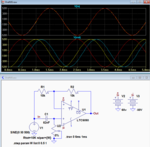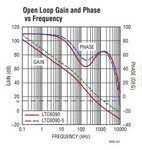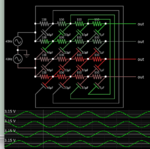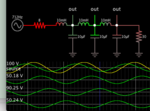jimmykk
Full Member level 3
Hi
I have a high voltage(let's say +-100Vpp) sine signal of 500khz and i want this signal to be phase shifted(+ve) by 0, 90, 180 and 270 degrees.
That is a circuit which has 500khz input signal and 4 outputs with 0, 90, 180 and 270 degrees phase shifted.
I do not want any attenuation in the circuit. I have looked into op-amp/transistor circuits with RC Components. But have not come very far with that yet.
Is integrator circuit the way of doing it? Suggestions?
I have a high voltage(let's say +-100Vpp) sine signal of 500khz and i want this signal to be phase shifted(+ve) by 0, 90, 180 and 270 degrees.
That is a circuit which has 500khz input signal and 4 outputs with 0, 90, 180 and 270 degrees phase shifted.
I do not want any attenuation in the circuit. I have looked into op-amp/transistor circuits with RC Components. But have not come very far with that yet.
Is integrator circuit the way of doing it? Suggestions?




